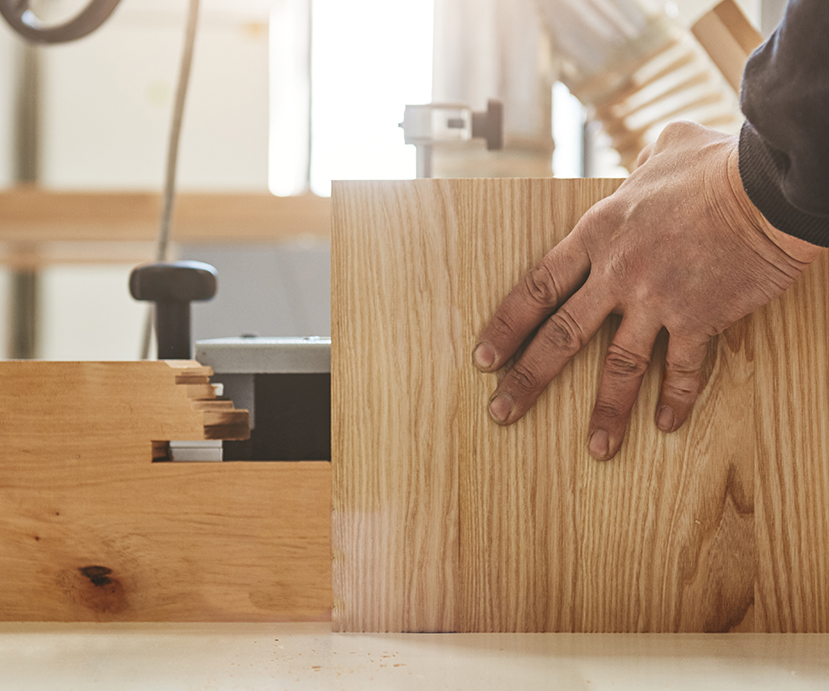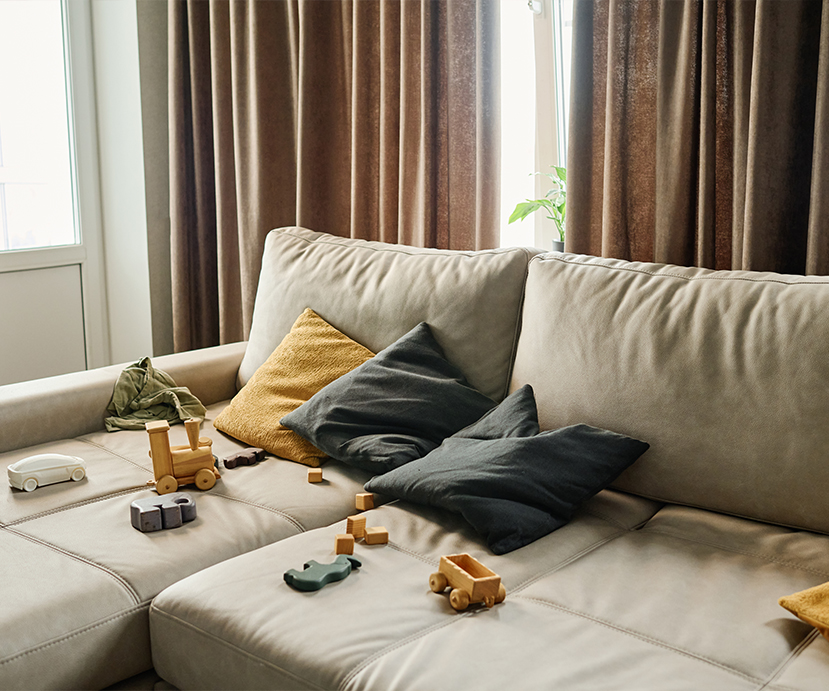10 Tips for Restoring Old Furniture
Professional furniture restorers and hobbyists alike all have one thing in common: the desire to pluck a piece of furniture off the side of the road and restore it to its former glory. What’s not to like? You’re saving something from a landfill and breathing new life into a forgotten item. The former owner only saw a table with broken legs and a surface marred by water rings. As a furniture restorer, you see possibility.
Furniture restoration involves tackling any aspect of work that’s required to get an old dresser or chair as close to the original condition as possible. Often, it’s more than just a facelift — it’s making the item usable again and possibly even adding value. Here are 10 tips that can help you make the old new again.
10: Make Sure You Have Time to Devote to the Project
You’ve just found the perfect end table for the right price: free. It’s sitting on the curb, and all it needs is a little tender loving care. You can already see how it’ll look sitting in your living room.
However, it’s important to remember that a small side project can quickly turn into a time-consuming chore, depending on your restoration skills and how many free hours you have to devote to the work. The more complex the task, the longer it’ll take to finish, so be sure you have enough time in your schedule — or are willing to give up several weekends — to finish your piece. Deep carvings can take many hours to strip and refinish. Slats and spindles are not easy to redo. If you have to remove rust, that step alone can take days of work, which is something you should keep in mind before deciding whether or not to haul that table home.
9: Research and Inspect
Do a little research to determine your piece’s value before you restore it. Inspect it for marks or labels that may indicate its origin. If you suspect it’s worth some money, consult a professional before proceeding with any work. Take photos of any markings or tags for your records. Removing a collectible antique’s finish could lessen or void its value, so hold off on stripping or sanding until you know exactly what you have.
If you’re not an expert furniture restorer, don’t worry. It’s easy to look for a few telltale signs of age. Feel underneath for dull interior corners. Partially unscrew a screw and look at the threads. If they have inconsistent widths between them, then the piece is probably pretty old. Remove a drawer and see if it has dovetail joints. If you find any of these things, the furniture is likely old and well made, and you should have a professional antique appraiser value the piece.
8: Establish a Budget
Once you’ve determined whether your found treasure is actually worth any money, you need to decide how much cash you want to sink into it. Yes, you might love the challenge of furniture restoration, but if the piece isn’t valuable, you’ll need to figure out how important it is to you. Is it something that can be repaired relatively inexpensively? Will the project cost you less than buying a new piece? Is it worth your time?
Some projects may just need a few simple fixes you can quickly complete. Others may be more involved and could wind up costing you way more than you intended to spend, which could be the reason the furniture was sitting on the curb to begin with.
7: Know What You Want It to Look Like
It’s happened to every restorer: You pull a wooden table off the curb, thinking its color will nicely match the rest of the furniture in a given room, only to discover after restoration begins that the piece is actually made from lighter-colored wood and doesn’t match at all. Luckily, with a little examination, you can get an idea of the true grain’s color. Find a spot that’s been protected from everyday wear, such as the back of a drawer front. Taking a peek at an unworn area will give you an idea what the the finished product will look like.
6: Safety First
When embarking on a furniture restoration project, be sure you have safety in the front of your mind. The last thing you want to do is have a splinter of wood accidentally lodge itself into your eye or be overcome by harsh fumes.
Make sure you wear long-sleeved clothing to protect your skin from harmful chemicals found in wood strippers and varnish. Use safety glasses to shield your eyes. If you’re stripping or varnishing a piece, wear a mask and work in a well-ventilated room to keep strong vapors at bay.
5: Clean Before You Start
Before whipping out your sandpaper and paintbrush, give the piece a thorough cleaning. After years of neglect, it’s likely to have a patina of dirt and grime. Removing the buildup can reveal a nice finish underneath, so a good cleaning and buffing may be all that old table needs to look new again.
Give the furniture a thorough scrub with a sponge and some vegetable-based oil soap and warm water. For detailed pieces, use a soft toothbrush to get into the nooks and crannies. To get between tight spots, pick up a slender wooden dowel rod and sharpen it like you would a pencil. Then use the sharp end for digging out grime. If you need to use steel wool on some stubborn wax buildup, go with 0000 grade (the finest grade available), and use a light hand. Too much pressure can dull the finish.
4: Repair
Next, repair or replace any broken parts. You may luck out and stumble across a identical leg or knob at an antique store, estate sale or on eBay, but don’t count on it. In most cases, a perfect match will require custom-made parts. Additionally, unless you consider yourself pretty handy, you may need a professional’s help with tougher repairs like leg replacements or almost anything relating to the structural integrity of the piece.
However, tightening screws may fix wobbly tables and chairs. Find the culprit by turning the piece over and inspecting each leg where it meets the body. If it shakes, check out the screws. If they’re in good shape, tighten them down. If they’re rusted out, carefully remove and replace them. Join small breaks with wood glue, and fill in small cracks with like-colored wood putty. If you plan to use stain as your finish, make sure you buy a stainable putty.
3: Refinish or Paint
Refinishing the piece means taking off the old finish and creating a new one. It’s physically demanding, so be prepared to use some elbow grease for this messy and cumbersome job. For a do-it-yourselfer, it’s best to use a combination of chemical strippers and sanding. Above all, be patient, even though some finishes can be stubborn to remove. Trying to speed up the process could result in even more repair work.
Research the type of stain you’ll need for your wood. If it’s not worth staining, you can always paint the surface. Just be sure it’s not a valuable piece, because it won’t be once you paint it. Before painting, sand the finish to smooth out any bumps. Regardless if you’re staining or painting, you’ll want to give the piece another good cleaning once you finish stripping and sanding to ensure that you end up with a professional-looking finish.
2: Keep a How-to Guide Handy
If you haven’t done much furniture restoration, you’ll likely find it helpful to keep a guidebook on hand so you can quickly find answers to any questions that come up over the course of your project. The library is an excellent resource for manuals and other furniture reference materials. Of course, The Internet is also a great resource for information and videos in which experts guide you through each step of the restoration process.
1: Tools of the Trade
You’ll need some tools to make your project happen. Take a trip down the sandpaper aisle and get a variety of grits. Buy both the moderately rough stuff (80 to 120 grit) and the finest grades (300 to 600). Get a couple of putty knives, one plastic and one metal. Also pick up some 0000 steel wool and a liquid stripping gel.
You’ll need Phillips head and flathead screwdrivers for tightening joints and a small hammer and rubber mallet, which will allow you to adjust the wood without leaving a mark.
Also have the following items on hand:
- Wood glue
- Wood putty
- Oil soap
- Measuring tape
- Plastic gloves
- Respirator
- 2- to 3-inch (5.08 to 7.62 centimeters) angled paint brush
- Toothbrush
Now that your toolbox is full and you’re armed with these tips, you’re ready to begin restoring your furniture to its former glory.






